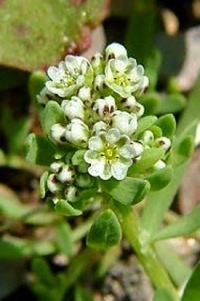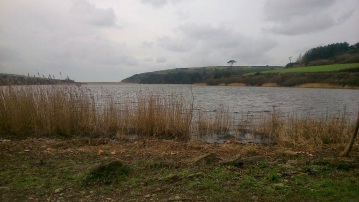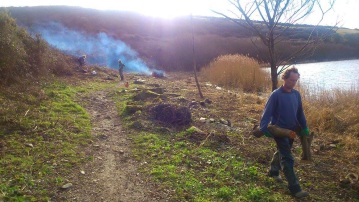
Strapwort (Corrigiola litoralis)
The edges of Loe Pool used to be home to Strapwort (Corrigiola litoralis) a critically endangered plant now only found on the shores of Slapton Ley National Nature Reserve in Devon. Natural England’s Vascular Plants Taxon Group has identified the species as being at High Risk of becoming extinct by 2020. Unfortunately it became extinct at Loe Pool in the early 20th century, but this year we are working with the Whitely Wildlife Conservation Trust (WWCT), a scientific and education charity based at Paignton Zoo, to bring this plant back to Loe Pool and Cornwall.
Regular records of Strapwort exist throughout the 1800s, however in 1915 a record states that it “was plentiful, now practically extinct.” This plant only grows on the edge of freshwater lakes where the water level decreases in summer, known as summer draw down, and increases over winter with higher rainfall. It also is not a very competitive little plant, needing practically bare earth to set seed and proliferate.
The chief reasons for extinction at Loe Pool are believed to be:
- Lack of natural water level fluctuation (reduced summer draw down zone). This is due to limited percolation of water through Loe Bar due to accumulated mine sediments. An artificial adit was inserted through Loe Bar in the late 19th century to aid drainage and to reduce the flood risk to Helston. This resulted in pretty much constant water levels all year round.
- Poor water quality with very high nutrient levels as a result of mining activities in the Cober catchment and agricultural run-off from fields surrounding the Loe.
- Increased encroachment of competitive species (such as bramble, gorse, willow, blackthorn) along the shoreline due to a cessation in grazing by cattle and sheep.

Side image of re-introduction site

Site clearing in progress
Conditions are now believed to be more accommodating to this little plant. The Loe Bar adit was updated and improved recently, and a new Water Level Management plan was agreed between the National Trust and the Environment Agency. Now the penstocks, which manage the height of the adit, are set at a level to improve the summer draw down and still help to alleviate flooding in winter. This is about a 1 metre fluctuation, which is sufficient for Strapwort in the summer. Water quality has dramatically improved in the last decade. The Trust has been working with the Loe Pool Forum (www.loepool.org) and tenant farmers to significantly decrease applications of chemicals and reduce soil erosion meaning nutrient levels, specifically phosphates, have decreased. Finally, although grazing will not be reintroduced to the edge of the Loe, we have embarked upon a programme of rotational scrub cutting to open up some areas (this will also benefits walkers as the view from the path will be better!).
So, the reintroduction site is ready, the seeds have been sown in a greenhouse at Paignton Zoo and we’re waiting for the weather to warm up in May to plant the seedlings out. Once the plants are established we will manage the habitat and monitor their progress. We’ll keep you updated!
References:
Byfield, A. (1992) The decline of Strapwort (Corrigiola litoralis) from Loe Pool, Cornwall with nature conservation recommendations. Plantlife, the Natural History Museum, Cromwell Road, London.
Coker, P.D. (1962) Corrigiola litoralis L. Biological Flora of the British Isles. Journal of Ecology, 50, 833-840.


Hi Loe Pool Forum,
I am a keen botanist and have been working for most of my career as a field surveyor in the UK and further abroad on a variety of projects. I am always happy to see species which are either new to me or seldom seen during my work to add to local records and improve my field knowledge.
Luckily I have had chance to see the Strapwort at Slapton but would love to see it at the Loe if I am visiting the Lizard area. How is the work progressing?
Many thx for your time in any replies……………cheers, Nik.
Hi Nik,
Thanks for getting in touch and nice to hear your interest.
There is one more year left on the reintroduction project. Which has been successfully supported by volunteers who helped to manage the site. Good news is that the low water levels in the lake last summer saw germination of large numbers of plants. I believe the planting location is accessed off the public footpath so you can visit. Happy to provide location information if needed.
Tim